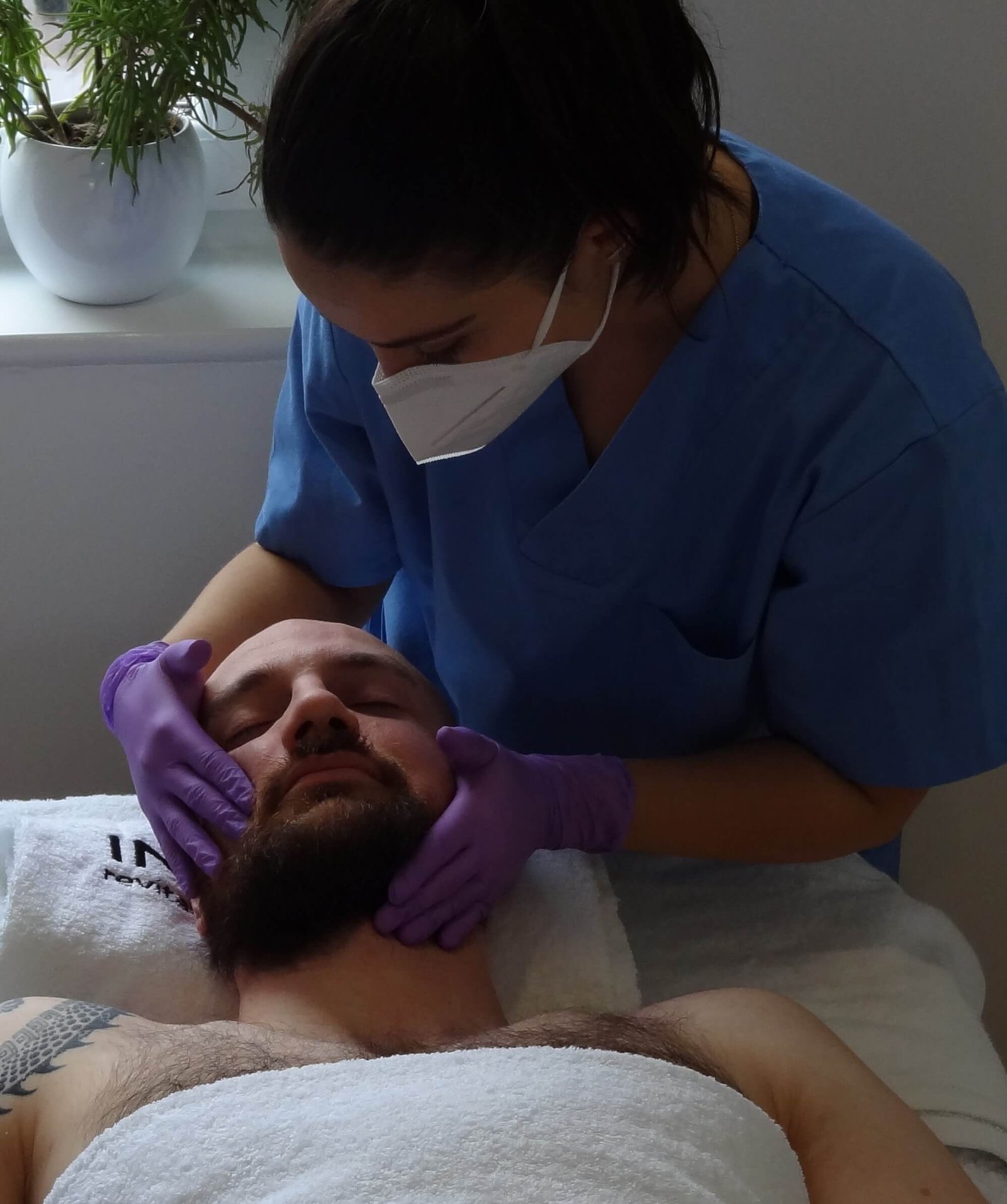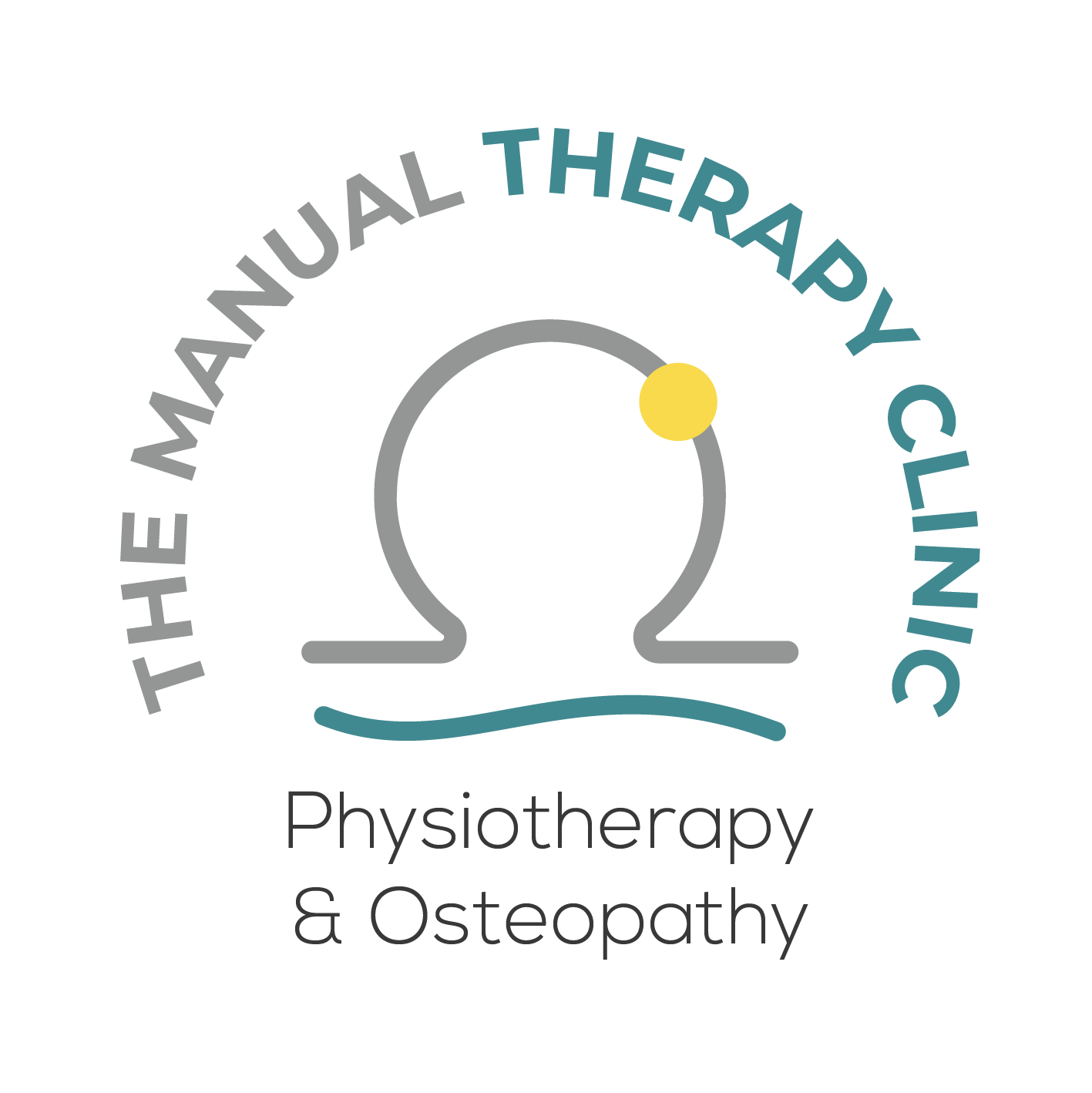What is it?
The temporomandibular joint (TMJ) connects the jawbone to the skull and can become swollen, injured, and painful due to abnormal occlusions, jaw muscle issues or pre- and post-dental procedures.
The TMJ Clinic compiles physiotherapy and osteopathic techniques to alleviate these symptoms. Physiotherapy is a non-invasive and effective intervention for certain TMJ disorders and can help ease pain and reduce dysfunction.
Collaboration between dentistry and physiotherapy can lead to a more efficient recovery for patients with TMJ conditions1.
Conditions affecting the jaw can result in painful and distressing experiences due to injury and inflammation.
These conditions may bring along additional symptoms, including headaches, dizziness, and jaw locking.
Even the simple act of opening and closing the mouth can be challenging. Ignoring these problems can lead to more severe issues such as jaw muscle imbalances, degeneration, and a loss of jaw mobility and functionality.
To avoid such complications, it is essential to address these issues promptly. The TMJ Clinic provides effective treatments to reduce pain and stiffness, restore joint function, and provide management strategies tailored to specific conditions.
Managing and treating TMJ issues can be effectively done through physical therapy.
A combination of physiotherapy and osteopathy techniques, such as mobilisations, manipulation, or direct treatment of the soft tissue, can address mechanical issues of the mouth.
Manual therapy can be performed around the orofacial region to relieve tension and restore functional mobility of the jaw2. Additionally, cervical postural issues can cause jaw pains, which can be treated through cervical spine manipulations to alleviate cervical-craniofacial pains in patients2.
Trigger points can be used to work on the vasculature and release ischemic compression and manage TMJ pain-dysfunction disorders3. Muscle spasms caused by long dental procedures or jaw dislocation can reduce jaw mobility and cause pain. Soft tissue massage around the active muscles of the mouth, including the face, neck, shoulder, and breath system, can improve mobility.
Nerve manipulation can also help ease tension, reduce spasms, improve jaw function and range of motion, and reduce pain.
Performing rehabilitation exercises is a crucial component of the treatment program, since they are designed to specifically restore jaw functionality and alleviate pain. Physical exercises are an effective treatment method for re-educating the masticatory muscles, enhancing function, and reducing discomfort4.

When do I need it?
If you’re experiencing TMJ pain and are uncertain of its cause, have occlusions or TMJ muscle spasms, require preparation for a dental procedure, or need assistance in recovering from dental surgery, the TMJ Clinic can help.
We offer manual therapy or targeted exercises to relieve your symptoms.
Conditions that can be treated:
Occlusions
Jaw muscles
Pre/Post-dental surgery
What to expect?
Our physiotherapist will conduct a comprehensive assessment of your symptoms and perform a physical examination to establish a diagnosis. Subsequently, the physiotherapist will customise a treatment plan based on your symptomatology and prescribe rehabilitation exercises for you.
Patients may or may not be referred by a dentist. Nevertheless, you can always seek advice from your physiotherapist to determine if a dental intervention is necessary.

Medical and physical health history

Physical Examination

Treatment and Rehabilitation plan

1
Medical and physical health history

2
Physical Examination

3
Treatment and Rehabilitation Plan
REFERENCES
1 de Toledo, E. G. et al. The interrelationship between dentistry and physiotherapy in the treatment of temporomandibular disorders. The Journal of Contemporary Dental Practice 13, 579-583 (2012).
2 Armijo-Olivo, S. et al. Effectiveness of Manual Therapy and Therapeutic Exercise for Temporomandibular Disorders: Systematic Review and Meta-Analysis. Physical Therapy 96, 9-25, doi:10.2522/ptj.20140548 (2016).
3 Asquini, G. et al. Effectiveness of manual therapy applied to craniomandibular structures in temporomandibular disorders: A systematic review. Journal Oral Rehabilitation 49, 442-455, doi:10.1111/joor.13299 (2022).
4 Navrátil, L. et al. Comprehensive treatment of temporomandibular joint disorders. Cranio 32, 24-30, doi:10.1179/0886963413z.0000000002 (2014).
